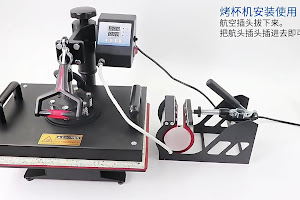- Home
- Our Products
- Consumables
- Dtg Pretreatment Solution
| Production Capacity | 200 Garments/Day |
| Capacity | 500 per hours |
| Object To Be Printed | T Shirt |
| Usage/Application | DTG |
| Packaging Type | Litre |
| Brand | Dupont |
| Weight | 1000 |
| Commercial Name | Prolific |
| Place of origin | US |
DTG pretreatment is a crucial step in the Direct to Garment (DTG) printing process. Here's an overview:
-
Purpose: DTG pretreatment is applied to the fabric before printing to enhance the adhesion, vibrancy, and washability of the ink. It helps create a suitable surface for the ink to bond to, especially on darker or colored fabrics.
-
Application: Pretreatment is typically applied using a spray or roller-coating method. The fabric is treated evenly to ensure consistent printing results across the garment.
-
Composition: DTG pretreatment solutions usually consist of water-based formulations containing a mix of ingredients such as surfactants, binders, and additives. These ingredients help the ink adhere to the fabric fibers and prevent bleeding or feathering.
-
Drying/Curing: After pretreatment is applied, the fabric needs to be dried or cured using a heat press or conveyor dryer. This step ensures that the pretreatment solution is fully absorbed into the fabric and ready for printing.
-
Types: There are various types of DTG pretreatment solutions available, each designed for specific fabric types and printing requirements. Some pretreatments are formulated for use on cotton fabrics, while others are suitable for polyester blends or dark-colored garments.
-
Importance: Proper pretreatment is essential for achieving high-quality DTG prints. It helps improve the washfastness and color vibrancy of the printed design, as well as prevents ink migration or bleeding into the fabric.
-
Environmental Considerations: Many DTG pretreatment solutions are eco-friendly and water-based, minimizing environmental impact. However, proper disposal procedures should be followed to ensure compliance with local regulations.
Overall, DTG pretreatment is a critical preparatory step in the DTG printing process, ensuring optimal adhesion and print quality on a wide range of fabric types and colors. By applying the right pretreatment solution, printers can achieve vibrant and durable prints that meet customer expectations.
Frequently Asked Questions
Resources That Help You Print Smarter
LETS’s PLAN FOR NEXT STEP



